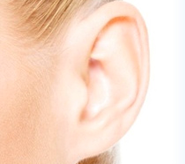
TECHNIQUES, INSTRUMENTS
AND METHODS
THE STEPS AND PROCEDURES OF SURGICAL PROCESSES

Home/Surgical procedures/Tampons
At the end of an operation with pads, the surgeon inserts strips of gauze of about 30-40 cm, compressing them a little, and are removed after one/two/three days, according to need and as the surgeon deems necessary.
In the ‘80s Prof. Mattioli was the first surgeon in the world to practice surgery without pads (rhinoplasty, septoplasty, septorhinoplasty, and removal of nasal polyps), thanks to the use of an innovative technique that makes use of sutures of the septum mucus and biological glues (fibrin glues), which eliminated the use of pads. The use of nasal pads is excluded also in cases of particularly complex surgery, thanks to this type of technique which Prof. Mattioli has used for many years now.
This technique was conceived in the attempt to make rhinoplasty less bothersome and painless, especially for children. The use of this technique on any type of patient, even adults, was thus a great conquest and has allowed rhinoplasty treatments to be placed at the disposal of all, with more ease and serenity. Nowadays, rhinoplasty without pads is practiced daily also for the removal of nasal polyps.
The benefits of nasal surgery without pads are:
- gentle awakening without the suffocating sensation; at the end of the operation, in cases of both nasal surgery and rhinoplasty, the patient is able to breathe serenely through the nose;
- absence of pain; since pads are not used, the nerve terminals and blood vessels are not compressed and as a consequence, there is no pain. Moreover, there is less swelling especially for rhinoplasty, with faster healing times;
- to medicate the zones, it is not necessary to remove dressings.
We need to remember that also sutures and reconstructive periods require time and patience. Most surgeons retain that pads carry out a support function and give greater guarantee to effectiveness. In reality, when the pad is removed after one, two, or three days after the operation, the cicatricial tissue is still not stable and what should have given support would most probably breakdown or shift.
However, even small postoperative traumas are well taken care of sequentially and held in check by the sutures, whereas the removal of nasal pads would deprive the nasal structure of a reinforced support, making the nose more fragile. We have to remember that often, when the pads are removed, the crusts that may have formed are torn away and may involve the removal of degenerated fragments of turbinate tissue, causing heavy nosebleeds.














